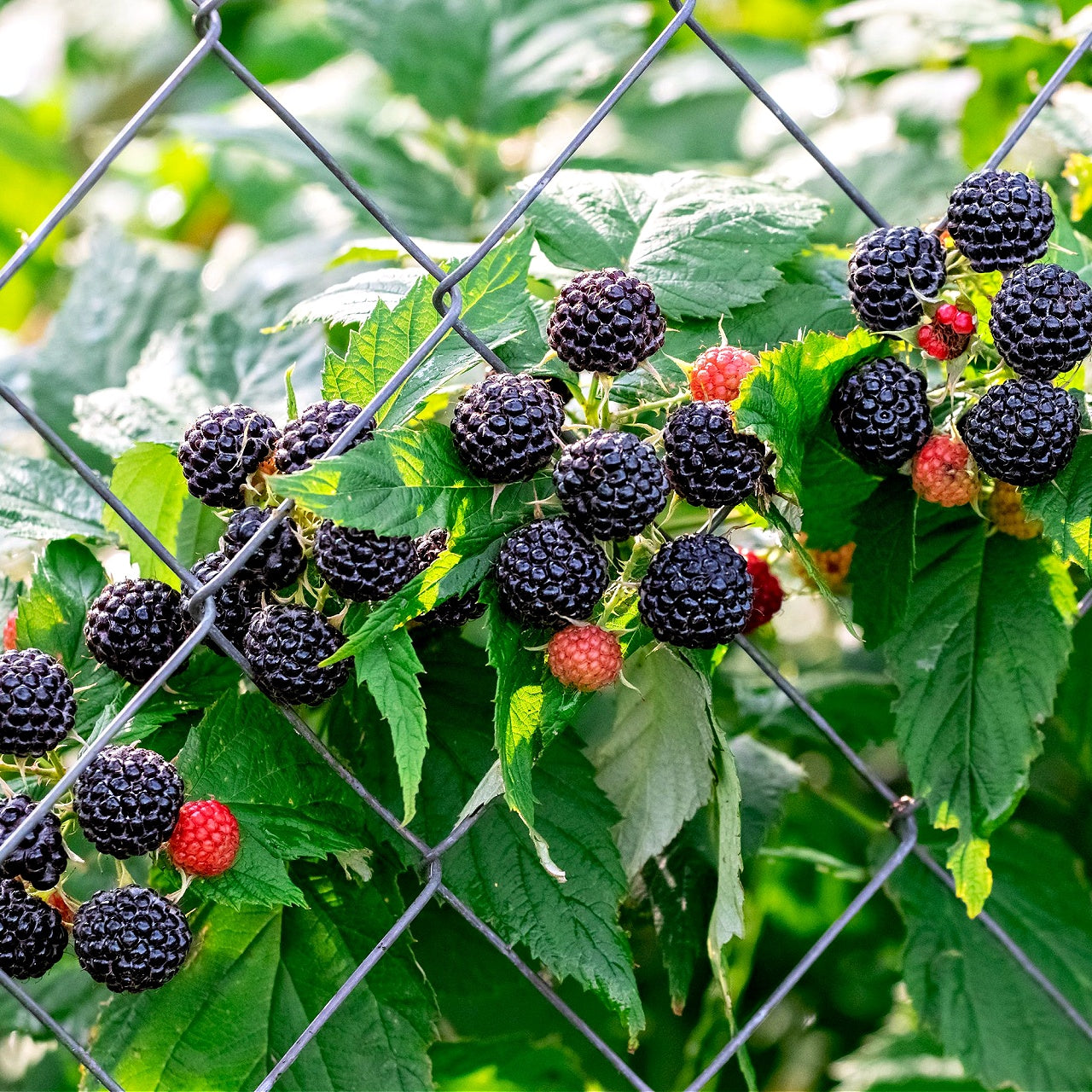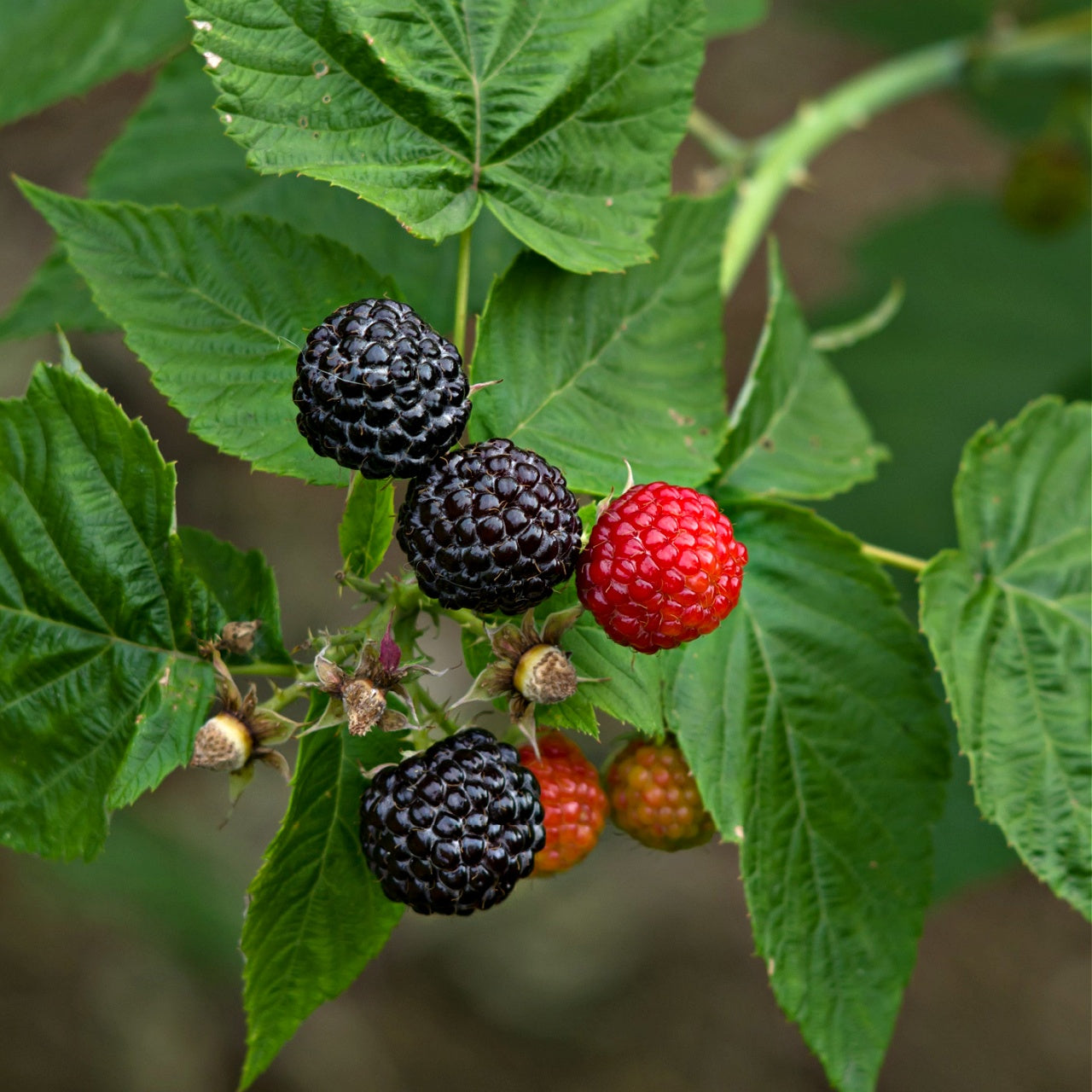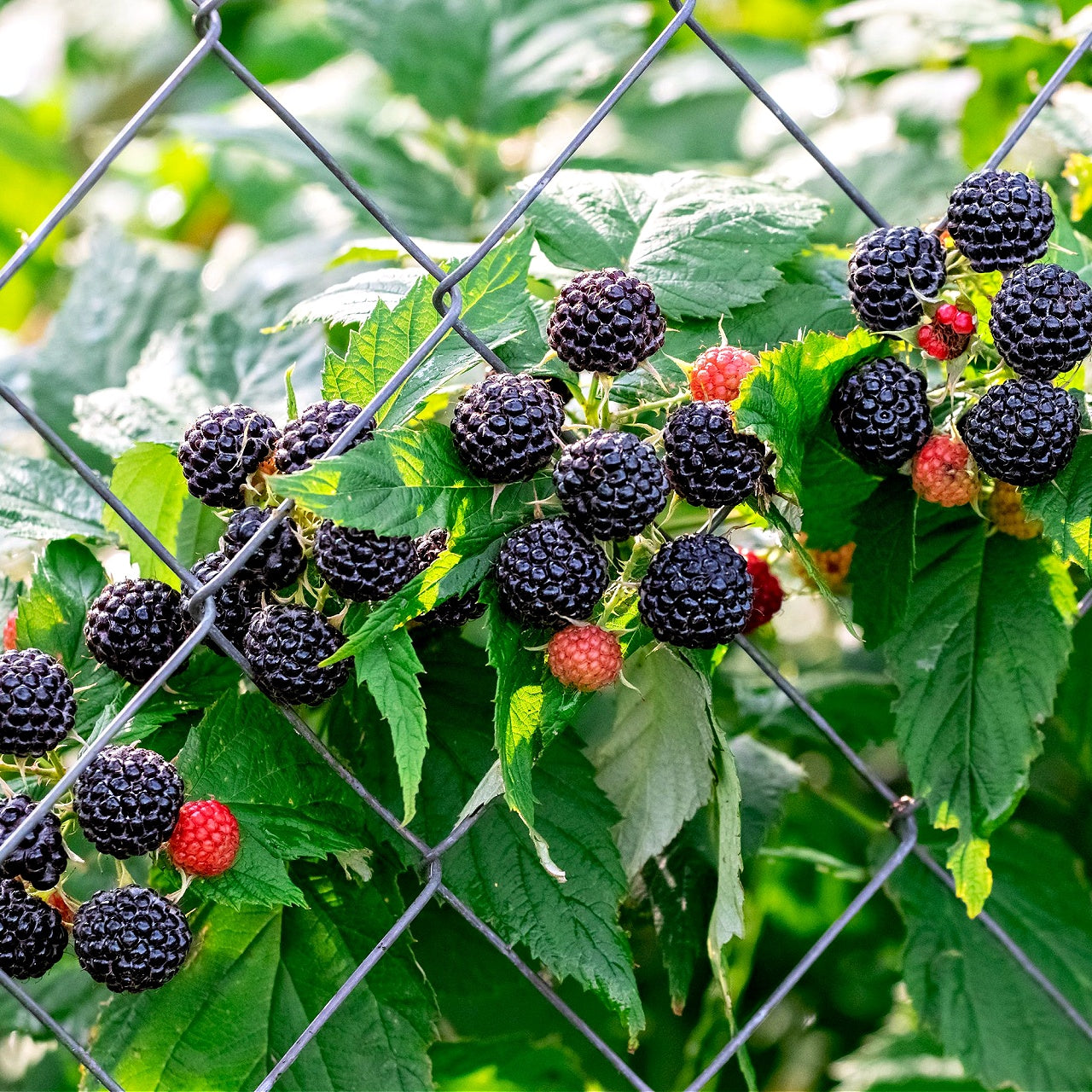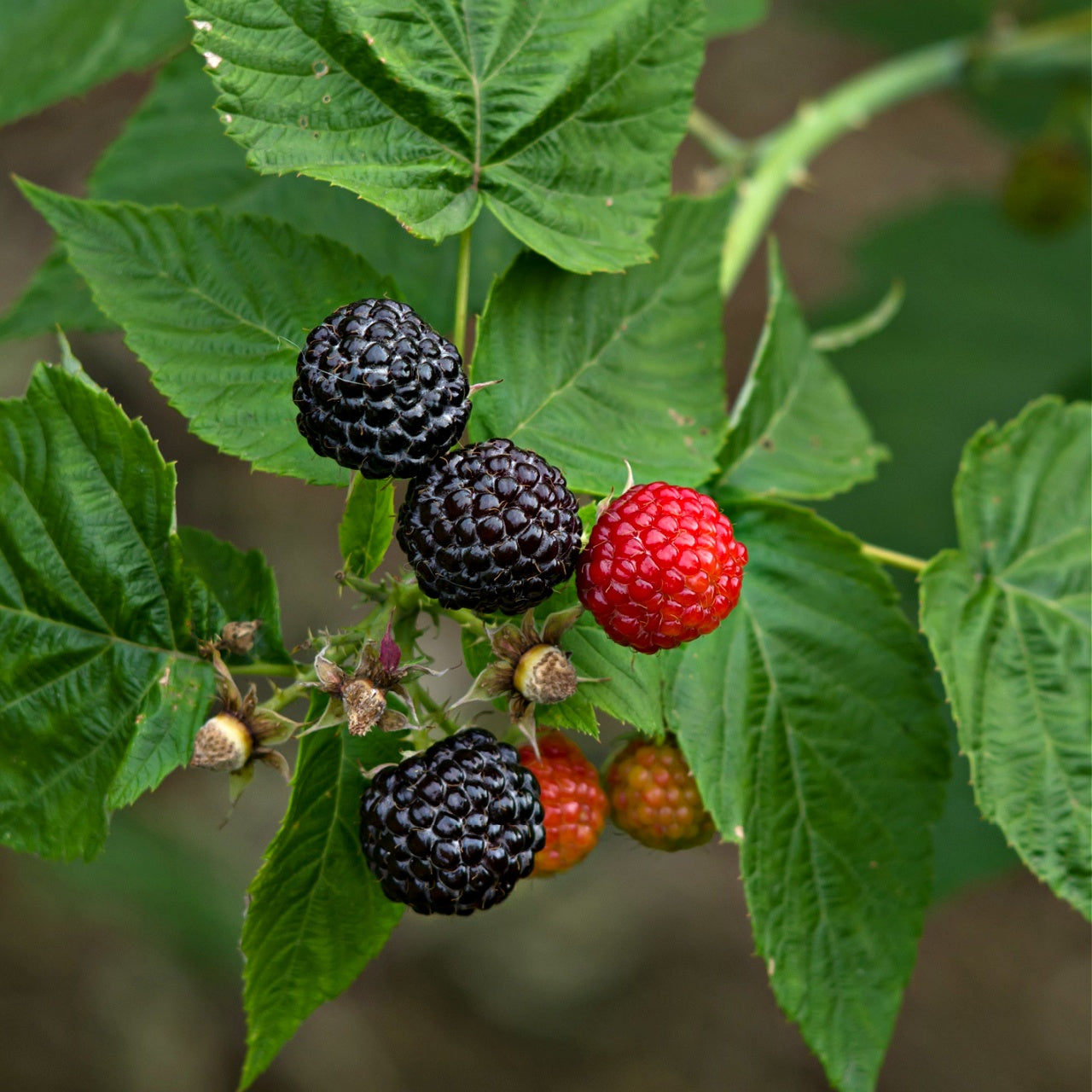Black Raspberry Plants
Black Raspberry Plants
This plant ships:
Ships November–April within 10 business days after the order is placed.Couldn't load pickup availability
Exposure
Full SunHeight at Maturity
Under 10 FeetUsage
FruitingShipped As
Bare-rootShips
Ships November–April within 10 business days after the order is placed.Planting Zones
5-8Black Raspberry Plants
Black Raspberry Plants can be seen growing in neglected fields or hedges. It can grow up to 4 feet. It bears fruits after the cane of the tree grows to 6 feet. Usually, this can be produced in acidic soil in nature and loamy. The fruits of it bloom from June to August. It is widely grown in Canada and the northern part of America.
They have been known to provide pollen for bees. It (Rubus spp) is a member of the rose family (Rosaceae) native to the eastern part of North America. It is a deciduous shrub growing between seven and ten feet tall.
The berries are typically purple, but some variants produce yellow. They need well-draining soil and can be grown in partial or full sun.
Black Raspberry Plants Grow On 7 Continents
It is native to almost all seven continents. You can find it growing wild in open fields and thickets. It blooms in May, and the berries ripen in June and August. Growing is relatively natural. It needs full to partial sun and can adapt to many soil types.
These bushes are shrubs that produce fruit, even sometimes more than their red cousin. The leaves are sometimes covered with a waxy sheen and sometimes have a purplish tent.
The sheet can have 3 to 5 leaflets ranging from 2 to 3.2 inches. They also produce fruit, dark purple rather than the traditional red, but have been known to produce rare yellow ones. The flowers bloom between April and July, and the berries tend to ripen from July to August.
Planting each Bush 2.5 feet apart is preferred to allow easy access to the forest for harvesting or grooming. The recommended soil for planting the bushes is well-drained and near non-soggy soil.
It Has Soft Stunning Foliage
The leaves are a soft, natural green, smooth to the touch, with a jagged edge. It is a perennial with woody stems, ensuring that it should live for a long while so long as it receives proper care. Red ones blossoms are pure white, with five petals, which should attract all manner of butterflies for the family to enjoy.
When pollinated, they bear deep red berries. The sweet-smelling berries should also attract cute songbirds, squirrels, rabbits, and deer, perfect for nature-loving families.
The flowers are white to greenish-white with single or small clusters. The red is rounded, two centimeters long and wide, typically maturing between July to September. A beautiful bush to add to any garden is rarely raided by wildlife, unlike its blackberry counterpart.
It is a fruiting shrub. The red type is very drought-resistant. The scientific name for this plant is Rebus Idaeus, which means "Heritage." The Heritage Everbearing type is an easy favorite due to its deep flavor, firmness, and large-sized fruit.
It is easy to force it into production twice yearly and will even produce its first year. The early, slim harvest starts in July and the second in September. Expect to have a hefty yield through the fall.
This Plant Does Great In Cold Zones
This hardy type will do well even in colder zones where most other varieties grow poorly. The self-supporting canes make a good bramble ground cover, trellis, or additional vine support.
It is a flexible hermaphrodite that fertilizes itself in sandy, loamy, clay, acidic, neutral, and base soils, though it prefers moist soil with excellent drainage. It grows well in the sun or shade, thriving in the full range of hardy planting zones 3 through 7. This deciduous shrub reaches a height of three meters or 9ft 10in. And it is not frost-shy. Set it out in September and eat it in June.
Save Money by Pruning
Black Raspberry plants require proper pruning, a small area, and are considered to perish quickly. Black raspberry can grow in a landscape, so this can help you with your financial savings at home. You can gather a lot of produce from them to grow your own.
These should be set apart at least three hundred feet from wild ones so they do not catch any diseases. You should put them where the soil is smooth and ensure ample space between each cane.
You can use both sides of your row for harvesting. When looking to train and prune, it is essential to keep an eye on and inspect your patches very often. Stay on your pruning schedules to keep your patches manageable.
The berries will grow within a few months and can grow from winter through summer. You want to leave room for them to grow significantly because they will take up more space as the year progresses.
As time goes on and you take care of your bushes, you'll realize that the placement of your berries is essential because you need a place that can house both their height and growth. Growing them is excellent for nature as they allow food for birds.
However, deer are also fond of them and can sometimes eat the entire thing. Building deer fencing or a fedge can help prevent yours from being wholly consumed and safe from wildlife.
- Scientific Name: Rubus Spp
- Tree Height: 6 – 9 feet
- Tree Width: 4 – 5 feet
- Growth/Year: 5 – 6 feet
- Soil Type: loamy, gravelly, acidic
- Sun: Full Sun
Share



Good products
This is a wonderful addition to my garden. Looks great where I planted it.
These look great planted near the fruit trees.
Looks great where I planted it.
I love how tasty and healthy these berries turn out. I can't wait to see how the other plant I got turn out.



